Optional: listen text-to-speech using the voices already in your device
This feature makes use of the Text-To-Speech capability as you have it already installed and configured on your own device. You will see that there are some voices that are not so good, choose from the list if you have a chance.
The trip from Buenos Aires to Aconcagua, in the middle of the Andes Mountains and a few kilometers from the border with Chile, is the longest road trip I have ever done (> 3000 km). I love to travel by road and I have done many long trips (like going all along the coast of the Cantabrian Sea and Portugal until Cadiz and back to Madrid, or going south of Las Vegas and around the Colorado Canyon to Monument Valley and back along its north side) but none so beastly. In European terms, just the one way is equivalent to a Seville – Copenhagen by road. It gives an idea of the size of Argentina.
The origin of the trip could not have been more random. My dearest friend SDG, whose house we were staying at in Buenos Aires, wanted to show us his country house in the province of San Luis. And as a great Argentine canchero -and even a better host- he offered to show us his region. I had already flown over the Andes and had been amazed by how high and sharp they were and how long the mountain range was, so I said that Aconcagua attracted my attention, but that I acknowledged it was still far away from Merlo. And he answered that that pre-Andes area was famous for its beauty and its mountain roads and that it had always attracted his attention. Anyway, we were planning to drive ~1000 Km. until we reached Los Molles… weren’t there no 84ll$ to reach the Aconcagua…? 🤷🏻
… who says that? just hold my beer.

On the way we crossed the provinces of Buenos Aires, Córdoba, San Luis and Mendoza. The first day of the trip we arrived at Los Molles, about 800 km away. It is impressive how long it took us to get out of Buenos Aires on the highways, they were jammed with cars. I have lived many years of traffic jams in Madrid, but Buenos Aires is the monster of the third screen. Until you get 40 km away you don’t get clear of the traffic… it’s Greater Buenos Aires, the metropolitan area where some 15 million people live. Once you get out, the RN-8 route is not a multi-lane highway, but in most sections it is one lane with two-way traffic, like a national highway in Spain.
Los Molles – Merlo
Los Molles is a charming little town on the outskirts of Merlo. Where I have eaten the best chivito asado en cruz of my life. As a curiosity, the molle (Schinus molle) is a tree native to Argentina. It is a member of the anacardiaceae family and is characterized by its slender trunk and spreading branches, as well as its evergreen foliage and leafy appearance.
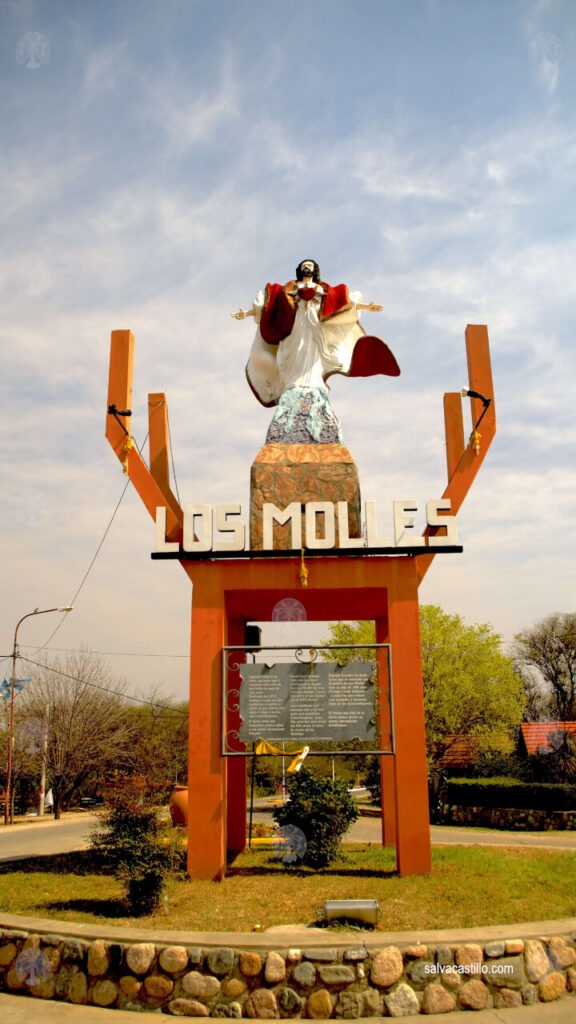
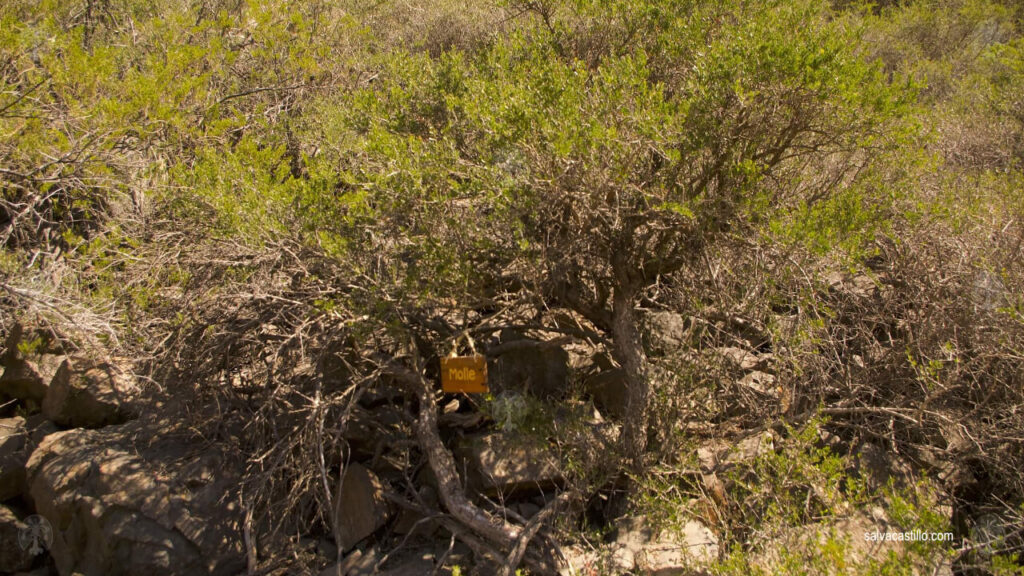
The area surrounding Merlo is famous for its natural landscapes. Although it is located at the foot of the Sierras de Comechingones, the city is already more than 1100 m. above sea level. Around it you can find both wetlands created by the multitude of streams there, as well as more rugged landscapes as befits the altitude of the mountains.


Instead of taking the more direct -and commercial- road to Aconcagua, we decided to take the mountain road to enjoy the scenery, although the drive there was a bit longer. As our car was a phenomenal super-prepared hot rod, we chilled.

When we reached the top to see the plain lands we were leaving behind, we found a couple of popular altars. In any part of the world the villagers improvise places that they consider special and build their little altar. In one of them there was a female figure with a mantle over her head, which I suppose was the Virgin Mary – she could also be a nun because she was holding a cross in her hands, and I imagine that the merchandising of the Christian cross should have begun after the Virgin Mary’s time. But well, the really weird thing was the other figure, which was a male, with sandals with ropes up to the knees and a leather skirt and a red cape. I tell you that figure was that of a centurion or a Roman nobleman. What are some people from Merlo doing worshipping a Roman centurion, is an unfathomable mystery of life. If that particular centurion was Tiberio Julio Abdes Pantera, that would be a triple somersault.


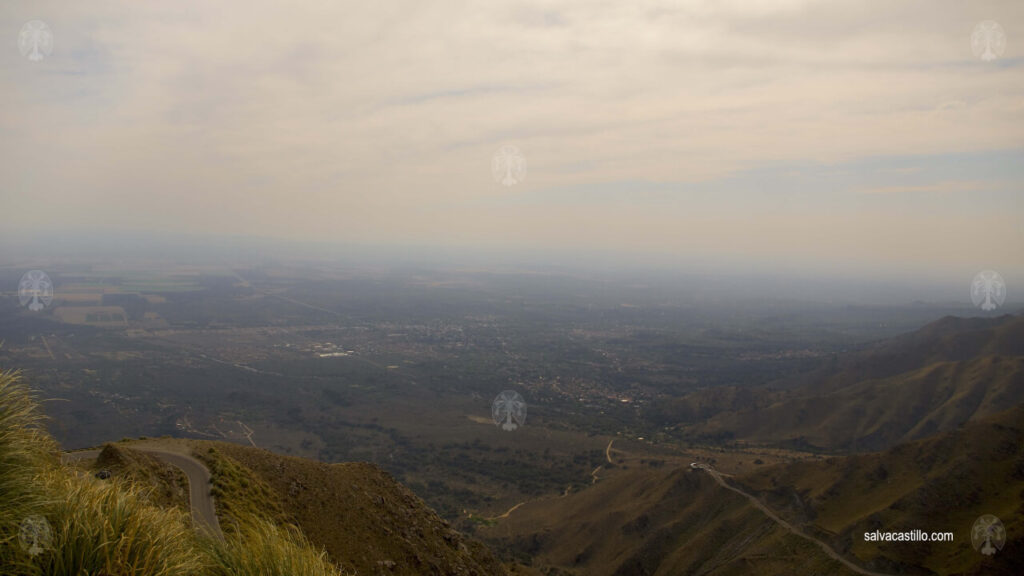
Villavicencio Natural Reserve
The Villavicencio Nature Reserve covers approximately 62,000 hectares and includes a variety of ecosystems, from mountain forests to arid areas. It is a private nature reserve, donated by the Danone Group – which, in turn, markets bottled mineral water under the Villavicencio brand.
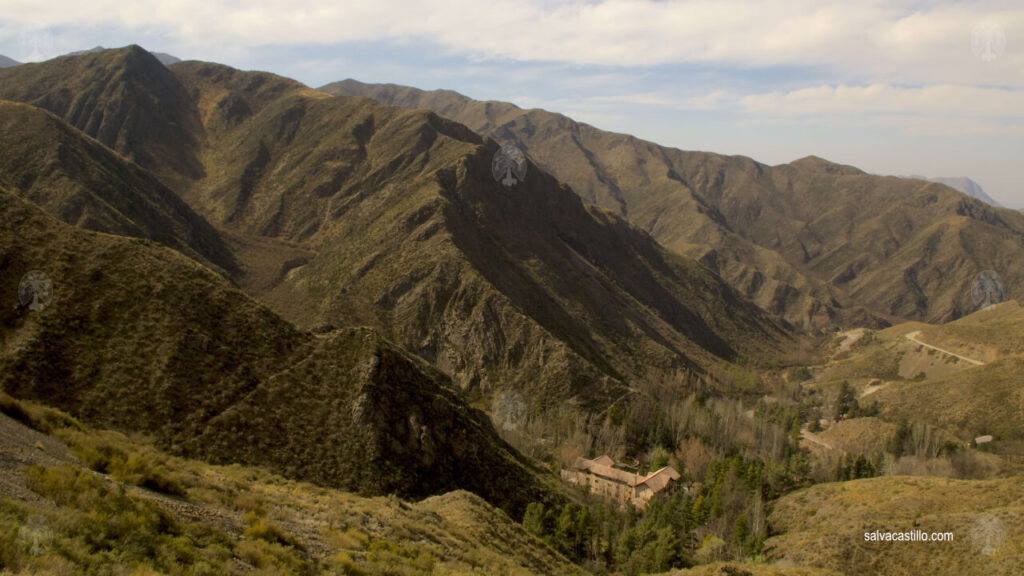
Villavicencio is a city in the Province of Mendoza known as the gateway to the mountains, since it is the starting point for those heading to Aconcagua and other high mountain areas. It is located at an altitude of approximately 1350 meters above sea level. The Casa Termas de Villavicencio, on its outskirts, is an emblematic building dating from the mid-twentieth century, originally built as a spa and lodge by the Spanish businessman José Villavicencio.

The house was an important meeting point for travelers on their way to the Andes Mountains. Its architecture is a mixture of styles, with neoclassical influences and details characteristic of the period, giving it an air of elegance and nostalgia.

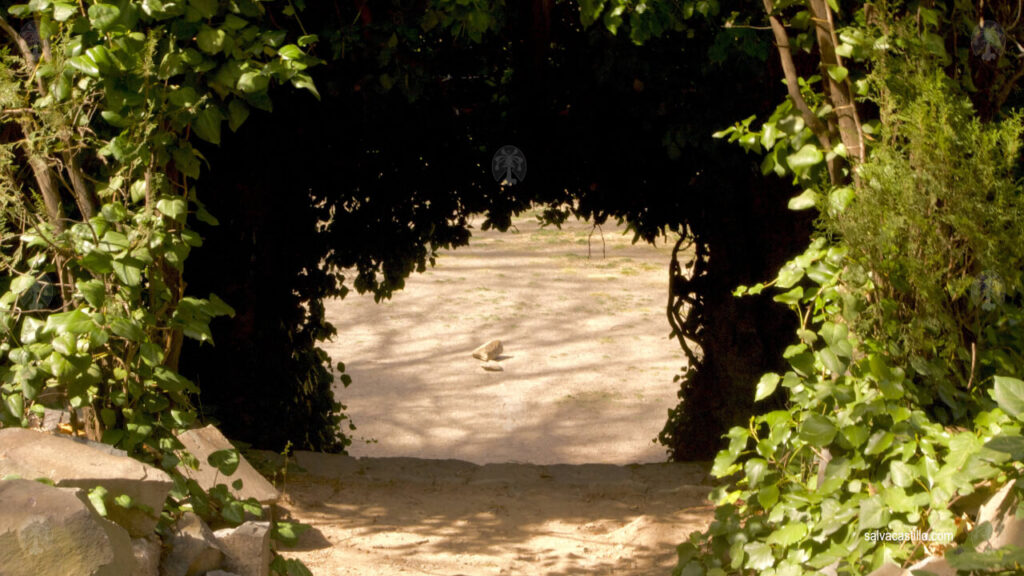
The gardens surrounding the house are arranged to illustrate to the visitor the particularities of the flora and fauna of the area.

We didn’t see any pumas, but we saw as many birds of prey as you’d like. We also saw some foxes and hares.

Because of the high altitude, cacti are becoming more frequent and trees and large shrubs are becoming scarce.

Uspallata Pass
Still within the Natural Reserve, we head into the mountains towards the Andes Mountains, leaving the plains behind.

On the slopes we saw a large group of guanacos.
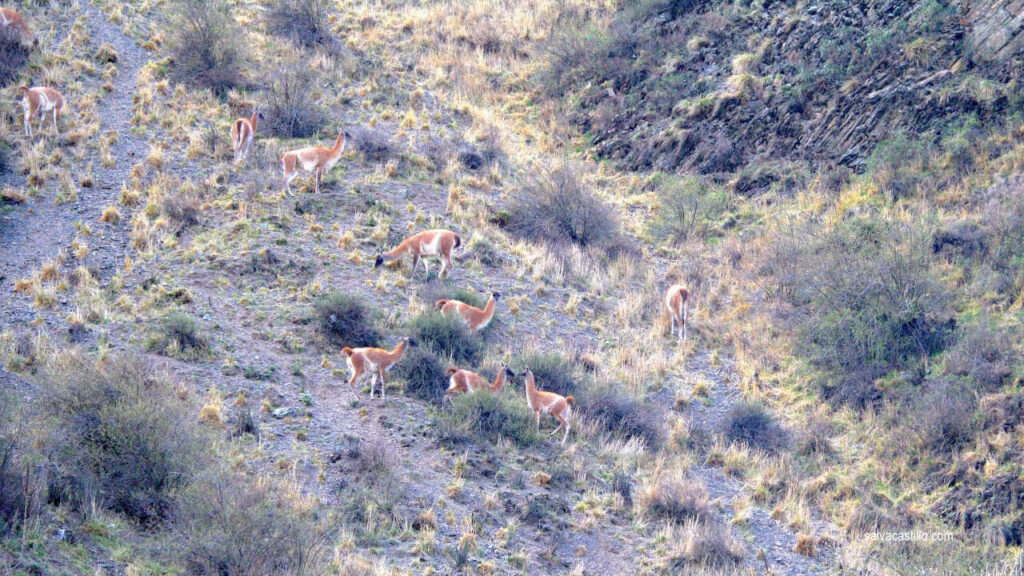
Guanacos belong to the camelid family and are native to South America, especially in regions such as Patagonia, Argentina and Chile, as well as in some areas of Peru and Bolivia. It is a close relative of the llama, alpaca and vicuña.

And at that moment… it happened…

The mountain road became much twistier and narrower, narrowing so much in some sections that only one car could pass at a time.
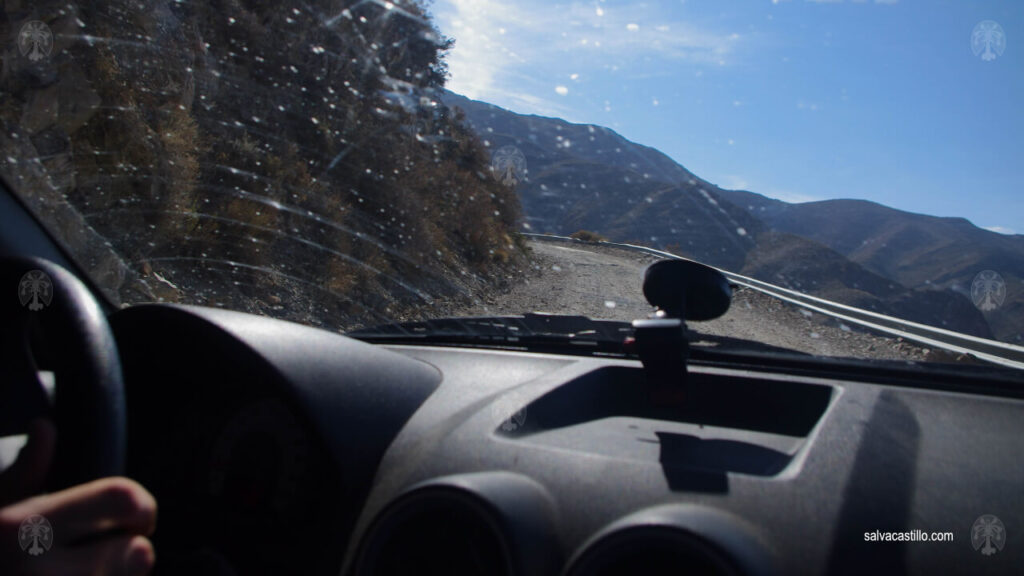
No comparison with the infamous Bolivian route of Road to Los Yungas, but it gave some shivers up the spine when you looked at the ravine that was next to it. There were not always guardrails.
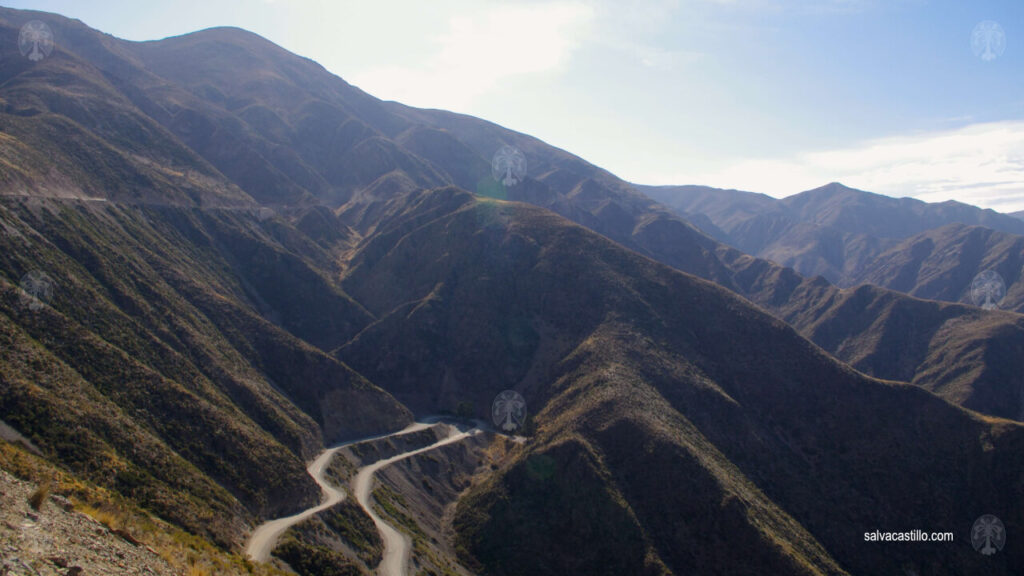
Along the way we find several points of interest, such as the Indian’s balcony, a breathtaking view from a balcony suspended in the air to a ravine with a vertical drop of 80 meters.


The Paramillo Cross was built by the Jesuits in the 17th century. It also has a popular altar.
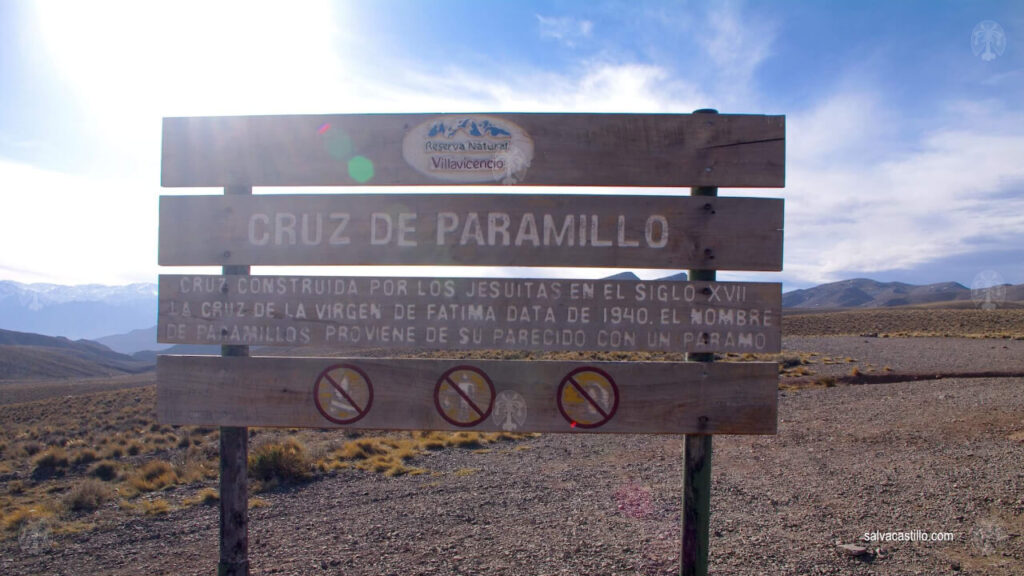

As we continue advancing we crown the mountain range where we were and pass to the other side where the view of the Andes is already constant.
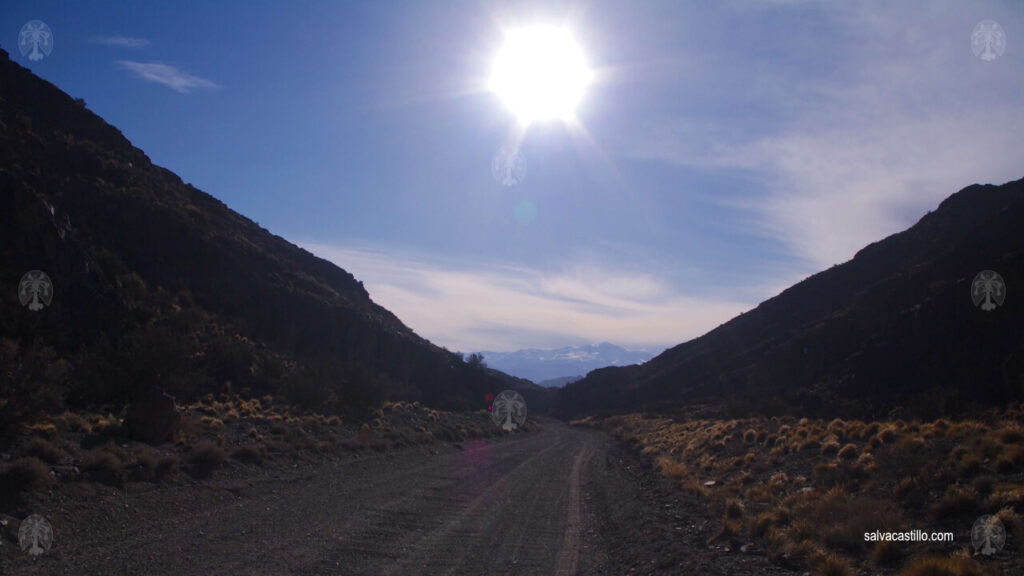
The Andes are the longest mountain range in the world, stretching approximately 7000 km across several South American countries, including Venezuela, Colombia, Ecuador, Peru, Bolivia, Chile and Argentina.
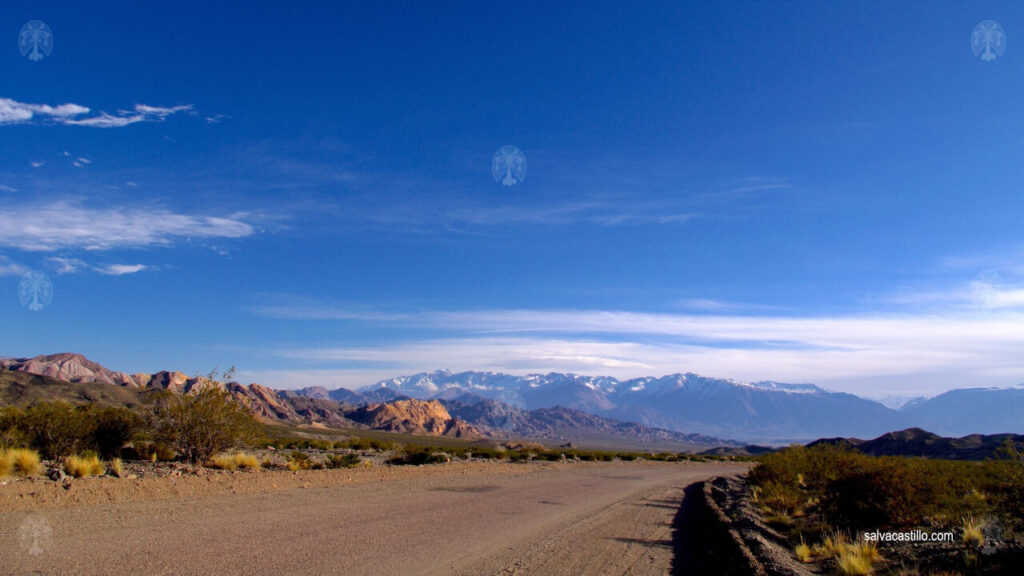
This majestic mountain range was formed as a result of tectonic activity, specifically the collision of the Nazca tectonic plate with the South American plate.
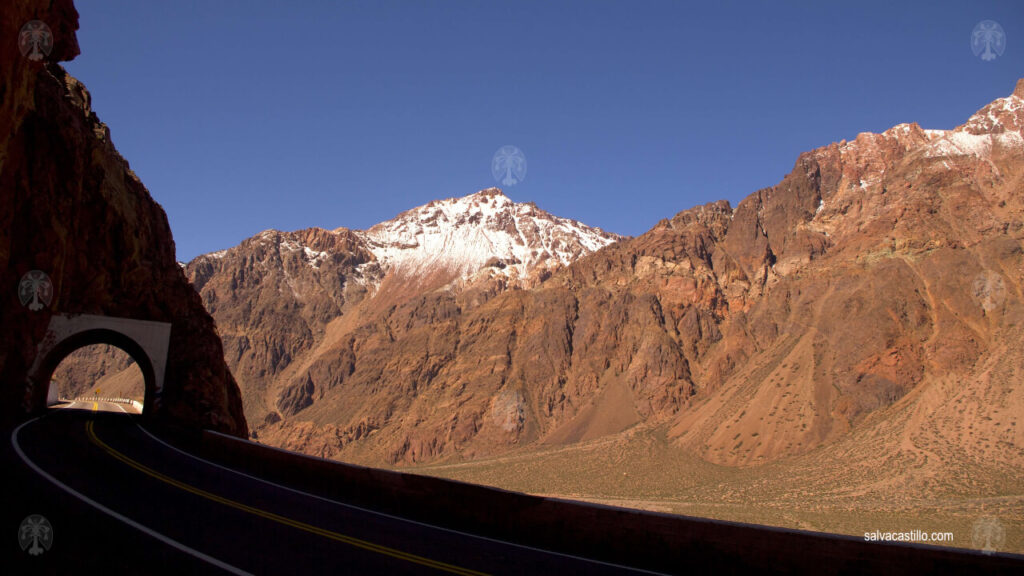
The Mendoza River originates in the mountain range and runs 275 km until it flows into the Guanache Lagoons.

The average altitude of the Andes varies according to the region, but in general it is estimated that the average altitude of the mountain range is around 4000 to 4500 m. above sea level. However, there are peaks that exceed 6000 m. For comparison, the average altitude of the Pyrenees is about 2500 m. above sea level.
This is an old pass of the route. Holy guacamole 😲.

Inca’s Bridge
Gaining altitude we reach the ski resort of Los Puquíos.

I was struck by how sharp the mountain peaks around it are still. This is because the Andes can be considered a relatively young geological formation. The formation of the range began during the Upper Cretaceous, about 80 million years ago. The range is still geologically active with earthquakes and uplift in certain areas. Compared to other major mountain formations such as the Appalachian Mountains in North America or the Ural Mountains in Europe, which are between 300 and 500 million years old, the Andes are much more recent.
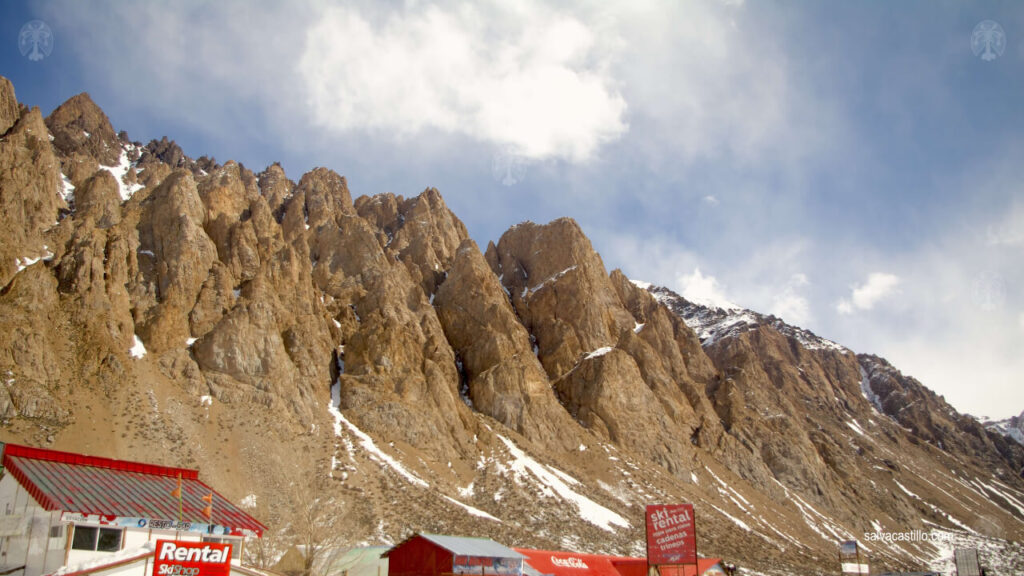
The Puente del Inca is an impressive natural formation of a stone bridge that has formed over thousands of years due to water erosion and mineral deposition. This phenomenon has resulted in a natural arch that crosses the Cuevas River, creating a spectacular landscape.

Although there have been some human interventions in the area, such as the construction of an abandoned hotel, the bridge itself is completely natural and is considered a geological wonder.

Located at an altitude of approximately 2740 meters above sea level, its color is due to the minerals found in the thermal waters that emerge in the area, such as sulfur and calcium carbonate.
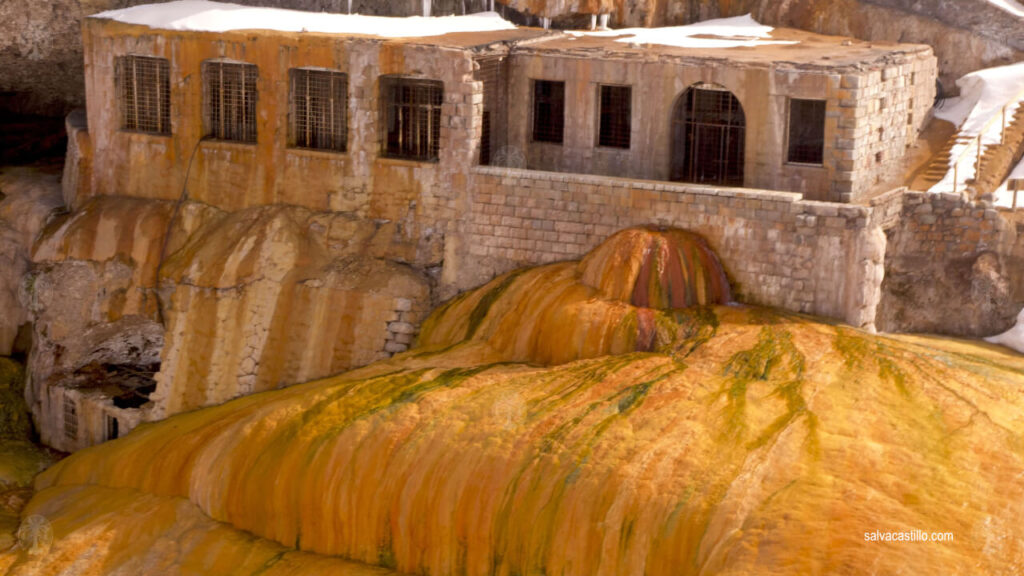
Aconcagua
Aconcagua, located in the Andes Mountains in Argentina, is the highest peak in South America, reaching an altitude of 6961 meters above sea level.
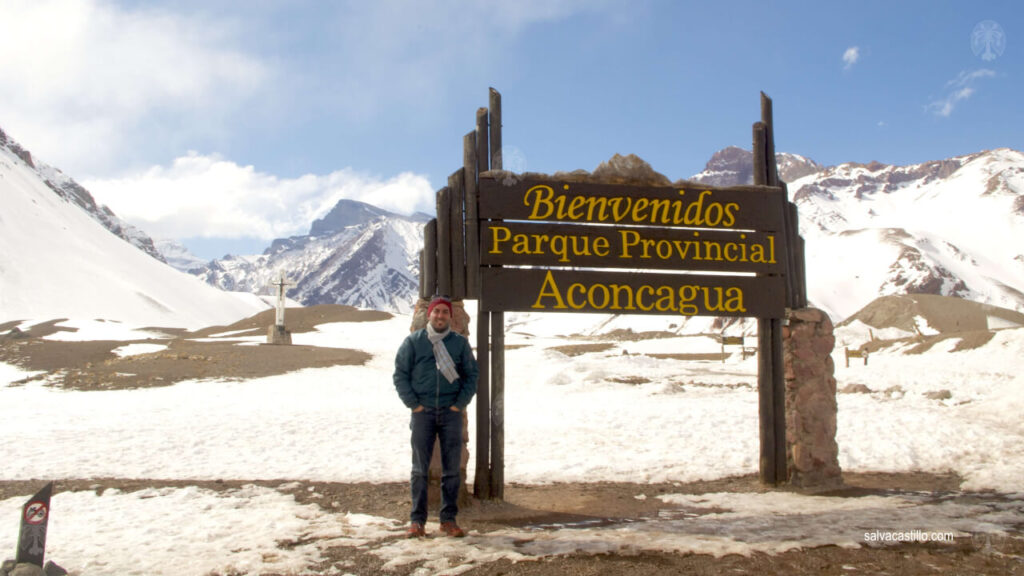
The climate in Aconcagua is extreme, characterized by strong winds and temperatures that can drop below freezing even in summer.

Aconcagua often has a cloud on its summit due to a meteorological phenomenon known as “orographic cloud”. This type of cloud forms when humid winds, upon hitting the mountain, are forced to ascend. As the air rises, it cools and its capacity to retain moisture decreases, causing water vapor to condense and form clouds. From this viewpoint the Aconcagua is to the north and the Pacific Ocean is only ~150 km to the west. The cloud at the summit was moving and rolling and the vapor flow was disappearing to the right.
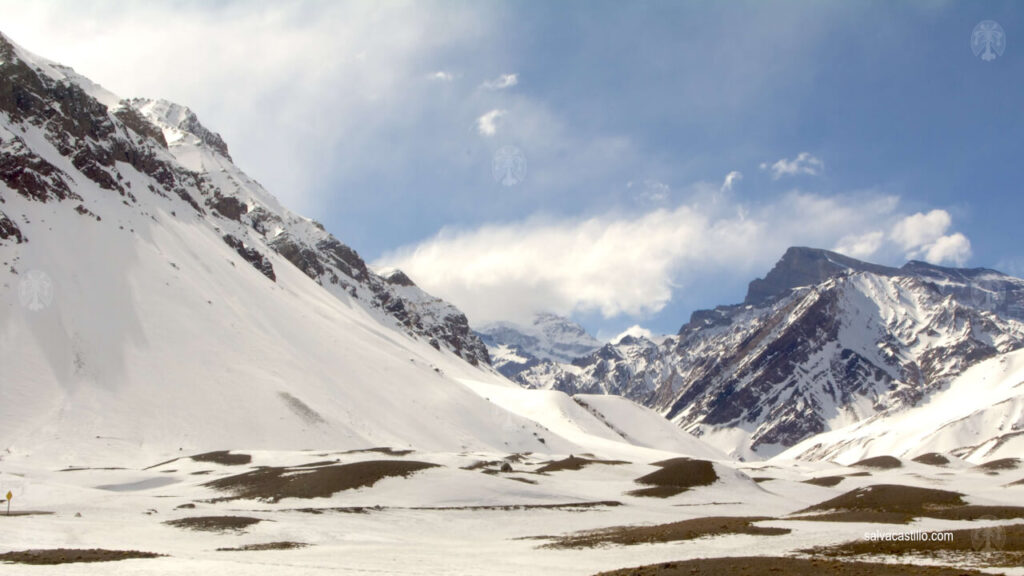
After a while the altitude becomes noticeable and breathing gets heavier. We started to walk along one of the trails towards the mountain but the snow was high and our feet were not equipped. And there was no question of driving 700 km back with wet and frozen feet.
Our off-road supercar -which I mentioned earlier- was waiting for us on the side of the road, ready for us to give it another beating to get back to Buenos Aires. Yes, a Volkswagen Gol 1.6 three-door (not to be confused with its big brother -and much bigger- Volkswagen GolF. I think if we could open the doors wide enough on a Golf, the Gol would fit inside 😄. It’s almost 6 inches smaller than a Volkswagen Polo). But not a noise all the way. We didn’t even get a puncture after driving many kilometers on country roads. A marvel of a car. Jeeps out of the way, the Gol Atomic is coming!
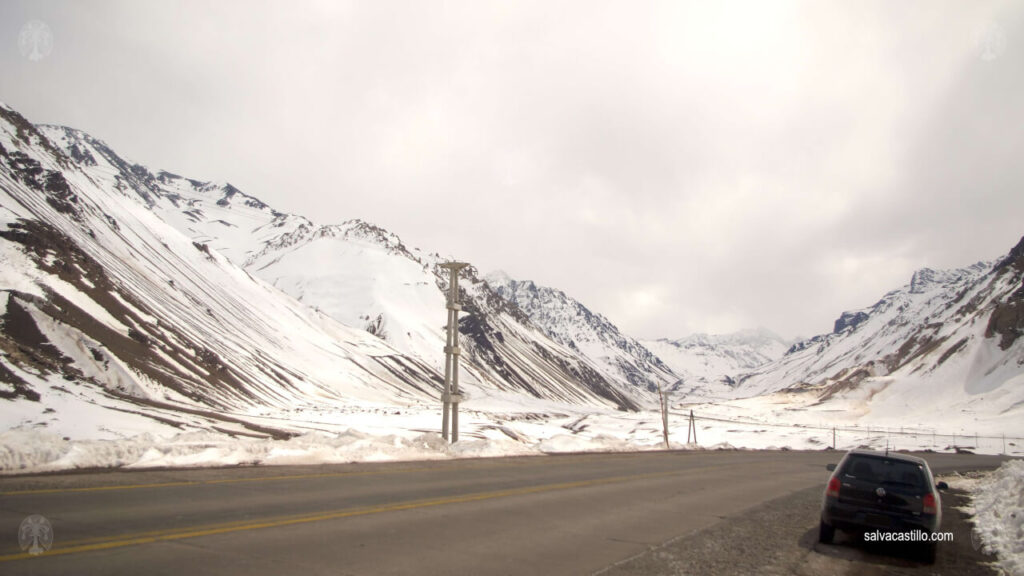
On the return trip we spent the night in Los Molles and arrived in Buenos Aires in the early hours of the second day, so at least we got rid of the traffic jam on the way in. The afternoon after we arrived our ectoplasms spent the time eating take-out food and playing Play Station while our battered bodies dried on the clothesline.